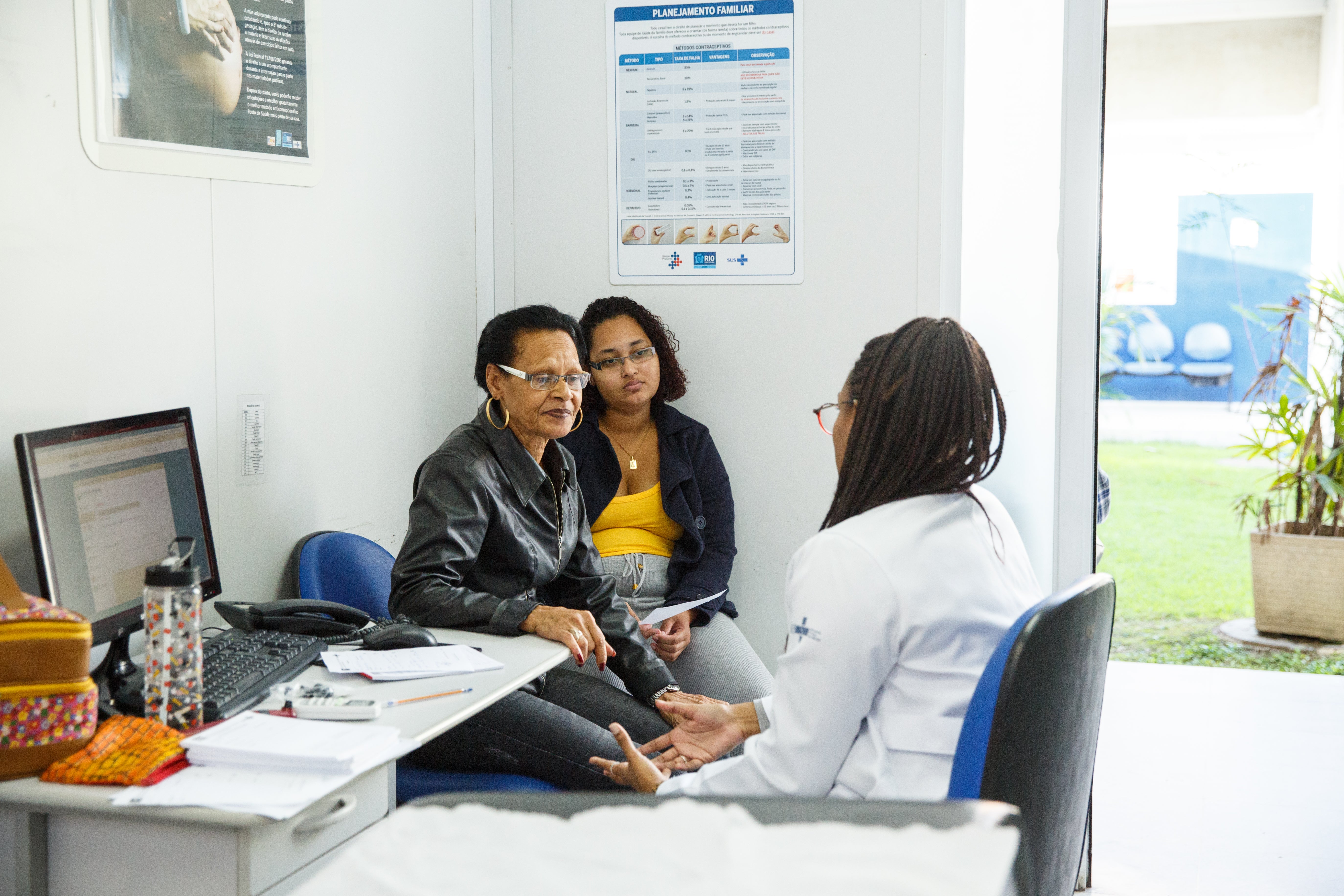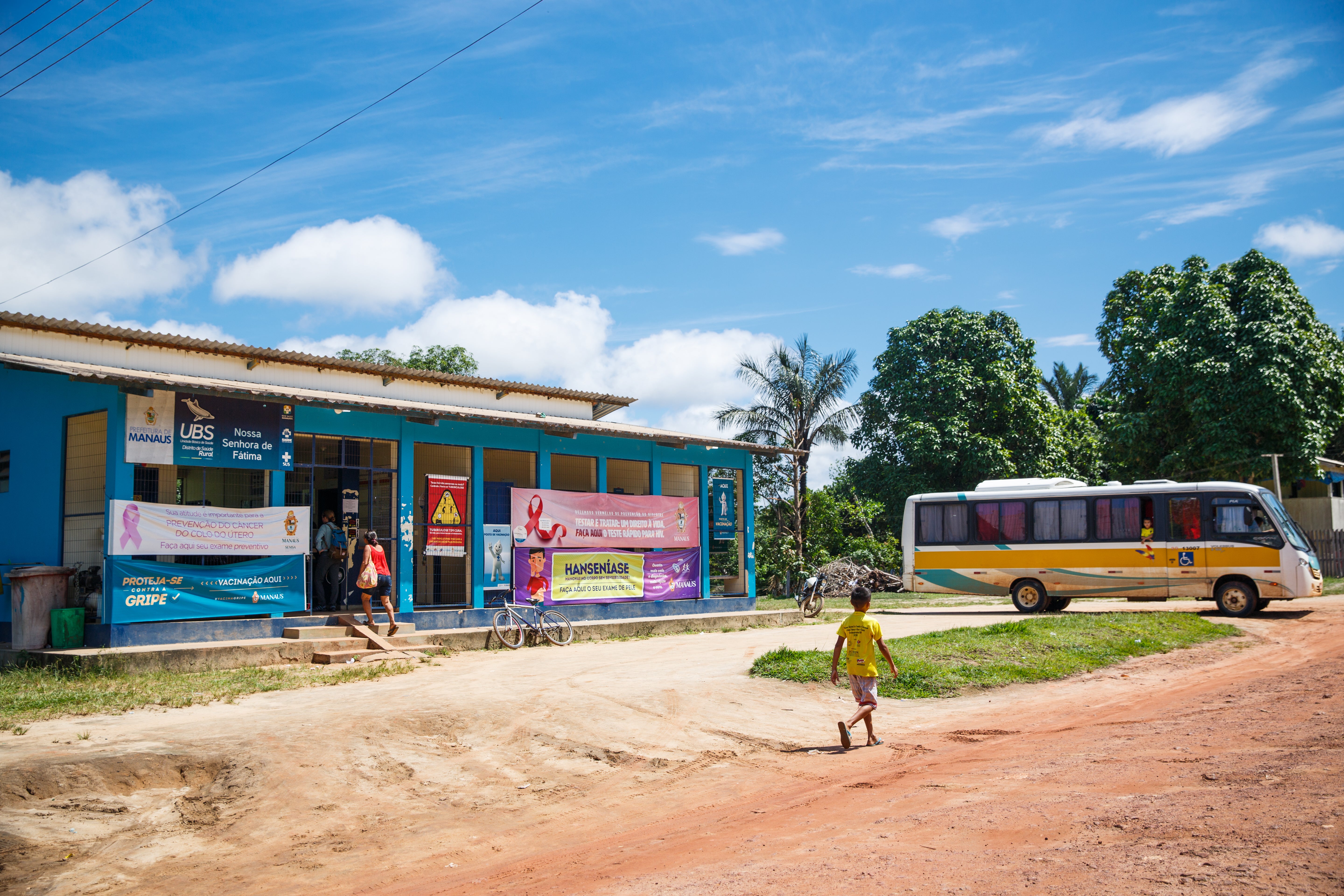Under two decades of military rule, Brazil experienced robust economic growth, with GDP growing at a rate as high as 10 percent or more, per year. This growth disproportionately benefited wealthy urbanites, however, and made Brazil one of the most inequitable countries in the world.
More recent economic growth has been both robust and more inclusive. From 2003 to 2013, Brazil enjoyed a rapid economic growth that lifted 26 million people out of poverty.
Despite this recent positive trend, the country, which includes nearly half of South America's landmass, still contains high levels of income inequality.
Brazil's economic inequity has strong geographic and racial dimensions. In the two poorest regions, the Northeast and North, per capita GDP is less than half that of the richest and whitest regions, the Southeast, South, and Central-West.
GDP by state in Brazil

IBGE, in partnership with State Statistical Agencies, State Government Secretariats and Superintendence of the Manaus Free-Trade Zone - SUFRAMA. See here: https://bit.ly/2HvDoF2
This economic divide drives inequity in access to primary health care among Brazil's 209 million people., As a result, just as poverty is concentrated in Brazil's North and Northeast regions, so are challenges in accessing health care. For example, infant mortality in the North and Northeast regions was 50 percent higher than in the South and Southeast regions in 2015. In addition, the only states with DTP3 immunization rates below 90 percent in 2015 were in the North and Northeast regions.
Living conditions across the country have improved significantly over the last several decades. In 1970, for example, only 33 percent of households had indoor water, 17 percent had access to improved sanitation, and less than half had electricity. By 2014–2015, nearly 90 percent had access to improved sanitation and nearly 100 percent had access to electricity.
These demographic and socioeconomic transitions are driving changes in the population's most pressing health needs. Recently, chronic noncommunicable diseases, such as heart disease, have emerged as the leading causes of death. These diseases are driven by high rates of alcohol consumption, unhealthy lifestyles, high blood pressure, and high body mass index. In 2015, an estimated 55 percent of Brazilians were overweight and eight percent were diabetic, with the highest rates in the richer South region. Still, about one-third of Brazilian families reported not having enough to eat.

Improvements in access to health care have been stymied by Brazil's chronic shortage of primary health care doctors, especially in the Northeast region, where poorer health outcomes persist. The density of doctors in the South (2 per 1,000 people) and Southeast regions (2.5 per 1,000 people) is twice that of the Northeast region, according to the most recent figures available from 2013.
Of Brazil's estimated 352,000 doctors as of 2015, only 4,000 are family health and community medicine doctors – barely enough to fill positions at one-tenth of the country's 40,000 health clinics.
From 1990 to 2010, the number of doctors per 1,000 people increased from 1.1 to 1.8, finally exceeding the benchmark of 1.4 per 1,000 people set by the World Health Organization (WHO). However, this national average masks regional disparities. Of the country's 26 states and one federal district, 22 are below the national average and five have a “severe shortage” of physicians, defined by the WHO as less than one physician per 1,000 people.
Ratio of doctors by region in Brazil, 2010

To address the national shortage of primary care physicians, as well as regional shortages of doctors in general, Brazil launched the controversial Mais Médicos (More Doctors) program in 2013, importing nearly 15,000 physicians from Cuba and other countries and placing them in high-need, low-resource communities. The foreign doctors helped Brazil provide physicians for the majority of Family Health Teams. In 2018, however, the initiative suffered a major setback, after the Cuban government withdrew its doctors, citing critical comments by Brazil's then president-elect, Jair Bolsonaro.
In 2015, Brazil still had higher per capita government health spending than the Latin American and Caribbean regional average (US$619 per capita vs. US$530 per capita), and it had substantially higher out-of-pocket spending (US$407 per capita vs. US$342 per capita), indicating a reliance on private-sector health spending. Wealthy Brazilians continue to use private providers at a high rate, even for primary care. The same is true for people (at all income levels) that live in municipalities that have not implemented the Family Health Strategy, and therefore have no Family Health Teams.
Sistema Único de Saúde (Unified Health System)
Brazil’s CHW program was part of a broad, progressive vision for a more equitable society. The Unified Health System was the foundation for such a vision.
The premise of the Unified Health System is that an estimated 90 percent of all health needs can be met - and that they are most effectively prevented and treated - at the primary health care level. For this reason, the focus of the Unified Health System is on the delivery of primary health care through CHWs and their team of primary health care providers.
Through municipalities that chose to implement the Family Health Strategy, the Unified Health System established the largest universal and free public health system in the world, covering nearly 160 million people, about 60 percent of Brazil’s population. It has improved access to primary and emergency care (tripling visits for primary care), helped Brazil reach universal coverage of immunization and prenatal care, and prompted the government to invest in the necessary resources (human and technological) to achieve universal access to primary care.
“The Family Health Strategy program is only possible in conjunction with the broader system of universal health care, the constitutional definition of health as a right of all Brazilians and the process of decentralization . . . the whole organization of the system, organization of the financial system, organization of rules, laws and definitions in 1988 that said clearly [that] health is a right of all people and is a duty of government . . . [and] if a nation doesn’t have a major decision like the SUS [Unified Health System], it cannot implement a national CHW program.”
Former coordinator of the CHW program
Investments in a national network of clinics

Brazil refocused the health system on primary health care to reach marginalized populations and decrease costs. The Unified Health System prompted Brazil to increase the number of primary health care facilities, much of it at the municipal level. Between 1968 and 2010, nearly 40,000 primary care clinics (health posts and health centers) were established. The density of outpatient facilities doubled from 1.9 facilities per 10,000 population in 1990 to 3.5 in 2009. At the same time, hospital growth was stagnant. The few hospitals built during this period were often smaller hospitals in poor regions of Brazil. This led to a decline in the density of hospital beds relative to outpatient facilities and demonstrates the fundamental shift in the health system toward primary care. According to a 2011 study, Brazil had one of the lowest inpatient hospital bed density rates in the OECD.
